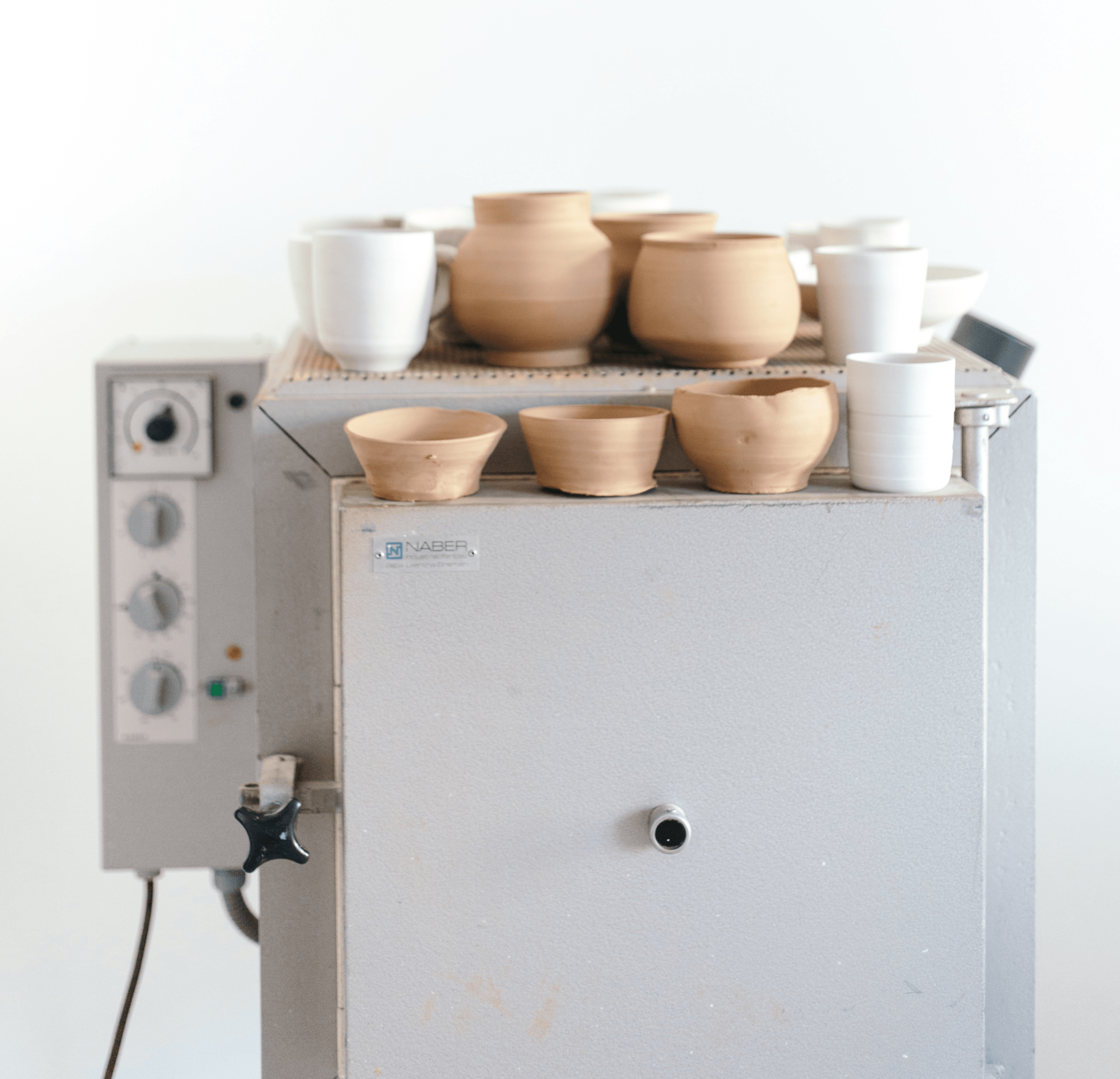It’s no secret: home-use kilns are growing in popularity more than ever. Artists have been turning spare rooms in their homes into mini-workshops. Home-based laboratories have become what’s convenient.
It’s easy to see why. In addition to having a DIY element that appeals to many ceramists, home-use kilns are easy to use and efficient.
Since they’ve exploded in popularity, kilns have started to branch into a wide range of different kinds. It’s no surprise that it’s getting harder and harder for home-based ceramists to navigate their way around the market.
That’s why we’ve brought you five of our favorite home-use kilns, along with a quick guide. Wondering about the best kilns for a home studio?
Let’s dive in!
Our Five Top Kilns
We’ve brought a selection of varied price points and types. Whether you’re a beginner or a professional, you’ll find something that fits your needs and wants here.
Rapidfire Pro Electric Kiln
This kiln is a great choice for beginners. It’s portable and user-friendly. At 7″ x 8″ x 13″, the Rapidfire Pro Electric kiln is a small-sized kiln that’s suitable for ceramists with smaller projects in mind.
The Rapidfire kiln is lightweight, at only 12 lbs. It’ll be easy to haul around in your home studio.
It’ll be even easier to create lacquered effects since the Rapidfire kiln can heat up to 2200 degrees. It uses innovative technology to distribute heat evenly. This feature will grant you more general control over your material.
The Rapidfire kiln’s main feature lies in its digital temperature controller. At 1500 watts, it allows you to juggle several projects at once. Perfect for ceramics and glass-fusing, this is an excellent choice for excited beginners.
Pros
- Available with programmable ramping controllers
- Lightweight
- Portable
Cons
- Not suitable for big and complex projects
Delphi Ez Pro 15-6 Electric Kiln
At 15” x 6.5”, this kiln has a sizable inside chamber. If you’re interested in larger, more complex projects, the Delphi kiln is ideal for you.
However, those projects may take a longer time to finish, because the kiln can only heat up to 1800 degrees. Yet, neither the time nor the temperature will affect the quality of your projects.
What makes this kiln so special is its pre-set firing programs. The Delphi company has teamed up with Orton Controllers and Jen-Ken Kilns to provide beginners with the ultimate user-friendly experience.
The pre-set firing programs are made to ensure absolute simplicity for first-time users. The kiln comes out of the box with four pre-set programs to accommodate different types of glass.
There are also five pre-set programs for metal clay, and three pre-set programs for bead-making. You can customize up to twenty-two pre-set programs, making one for each project.
Pros
- Has an Orton Controller
- Has pre-set firing programs
- Firing chamber deep enough for more complex, bigger projects
Cons
- Not suitable for a tight budget
Diamond Tech Fuseworks Craft Electric Kiln
For those of you who aren’t prepared to make a steep-priced commitment yet, this Diamond Tech kiln is worthy of a look. At 15 lbs, it’s perfectly portable and lightweight, making it ultimately space-convenient.
This table-top Diamond Tech kiln is 8” x 4”, leaning towards smaller kilns. If you don’t have a studio or a laboratory, the size is a practical feature. You could put it anywhere and start working on your projects.
Optimizing further practicality, this 120v kiln doesn’t include any complex firing schedules. All you have to do to start firing is set the timer.
Whether you don’t have the space for a bigger kiln or still wondering whether you want to invest in this hobby, this Diamond Tech is a perfectly affordable purchase that offers excellent quality.
Pros
- Perfect for smaller spaces
- Budget-friendly
- Lightweight
Cons
- Doesn’t reach the temperature needed for clay items
Olympic Electric Kiln
With a 15.5” x 15.5” octagon shelf, this kiln is a powerhouse. It has balanced heating that helps heat the chamber evenly. You can fire it every day, working on different projects and experimenting often.
You don’t have to sacrifice quality for quantity, either. This kiln features controlled cooling and high-performance heating that guarantees top-notch firing every single time.
The Olympic kiln is also coated with a three-inch bricklayer. This doesn’t only ensure efficiency but also secures good insulation as well.
The entire kiln is built with a special electrical design that has heat shields and perforations. This helps in providing air out extra heat and keep all components cool.
Pros
- Good for long-term use
- Arrives with furniture kit
- Can be fired every day
Cons
- Isn’t ideal for smaller spaces
Skutt Kiln
This 240v kiln offers varied possibilities. You can grow crystals, fuse glass, and fire ceramics.
If you’re unsure what projects you’ll pursue, the Skutt kiln is a good choice. Its versatility will give you the flexibility to choose your projects.
At 40” x 37” x 44”, this kiln is a bit on the bigger side. This makes it ideal for taking on bigger, more complex projects. It’s also relatively heavier, coming at 150 lbs.
Since a significant amount of heat is lost in your kiln, it makes up for this by directing more heat to specific areas through designing the elements. This kiln has twice the element grooves than most other kilns, ensuring huge design flexibility.
You can even write your own firing programs with this kiln. It has up to 32 segments withhold and ramp. On top of having pre-set programs, you can store up to 12 of your programs.
Pros
- Budget-friendly
- Ideal for big projects
- Can be used to grow crystals
Cons
- Heavy
Types of Kilns
Kilns have a long, long history. Even the Ancient Egyptians used them.
Kilns used to consist of holes in the ground and bonfires. Now they’ve evolved with technology. Branching into different types, they remain concentrated in three kinds: electric, gas, and wood.
Electric
Electric kilns are some of the most commonly-used kilns you’ll find. Their main appeal lies in their electric-fueled convenience. They’re often budget-friendly and ideal for those who can’t sacrifice much space.
When you fire electric kilns, you fire them in oxidation. This means that oxygen is present in a controlled space. This is guarantees good results when it comes to glazes.
Gas
When you use gas kilns, you depend on fire and natural gas in reduction. This doesn’t permit oxygen when firing. Although gas kilns can yield some unpredictable results, it can provide you with beautiful earth-tones.
Their unpredictability leads to inconsistency when it comes to results. With gas kilns, you’re guaranteed one-hit-wonders and one-time creations, but never consistent work.
Wood
Wood kilns have been in use for hundreds of years. They’re fueled by wood. They also require a lot of physical work like constant fueling and stoking of the fire to maintain it at consistently high temperatures.
Wood kilns take more than twice as long to fire than electric or gas kilns. It also requires constant monitoring when it comes to pottery.
Despite all of their inconveniences, wood kilns give beautiful, unique results. The wood ash that falls on your projects during firing gives it a distinct glaze that may make all the tiresome tasks worth it.
How Do You Choose Your Kiln?
If you’re a beginner, the task of choosing a kiln can seem puzzling. Here are two things to consider when choosing a kiln.
How Big Are Your Projects?
One of the things you should take into account when buying kilns is the size of your projects. Simply put, bigger projects will require a bigger firing chamber.
You can use smaller kilns to make a few plates, spoons, or glasses. But if you want to start taking on food bowls or big, elaborate vases, your small-sized kiln will need an upgrade.
However, a bigger kiln will be able to satisfy your artistic ambitions. A 23” x 27” kiln will help you produce most of the shapes and sizes that you want.
As an artisan, you should be able to predict the size of your future creations and projects.
It’s a good idea to consider circular kilns. Most circular kilns guarantee you a variety of sizes when it comes to projects, unlike front-loading kilns.
How Big Is Your Space?
The space of your firing chamber shouldn’t be the only space you’re worrying about. As a home-based artisan, you should take the working area into account.
Your kiln needs its own space. The average kiln takes up more space than a drying machine. If you don’t have enough space in your studio or laboratory, you might want to look for something smaller.
You also want to seek a lighter kiln, as most kiln weigh more than 50 lbs. The heavier your kiln is, the less portable it is. This may become a problem when moving it around, especially in restricted and small spaces.
Conclusion
Understandably, looking for the best kiln for the home can be challenging. But if you quickly pinpoint your criteria and decide to take the step, you’ll be firing in no time.
The Delphi Ez Pro 15-6 Electric Kiln is an ideal choice for beginners. With its numerous pre-set firing programs, figuring your way around this kiln will take no time. It’s a great long-lasting kiln that can withstand your more complicated projects.
If you’re looking for something smaller, the Diamond Tech Fuseworks Craft Electric Kiln is an appropriate choice. At just 15lbs and 8” x 4”, it’s the ultimate space-convenient kiln. It’s time-convenient too as you’ll reach a full fuse in 15 minutes at the most.
With the right kiln, you’re sure to create some beautiful pieces. These pieces are just a purchase away.

